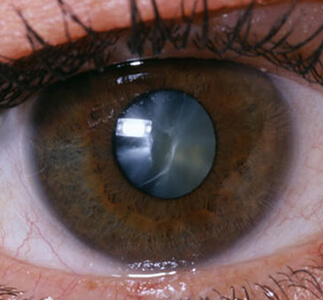What is a Cataract?

A cataract is characterized by the clouding of the eye’s lens. Just as everyone develops gray hair, eventually, everyone develops cataracts. Most individuals begin developing cataracts in their 40s or early 50s, but may not initially experience symptoms. Over time, the symptoms can appear in a variety of ways. Blurred vision, faded color perception, discomfort with night driving, difficulty reading road signs, and impaired fine-print reading are some of the most common initial symptoms. Cataracts usually develop slowly, but eventually, the rate of progression accelerates, and patients become more symptomatic and notice their vision deteriorating.
What Causes Cataracts?
The onset of signs and symptoms from cataracts will occur at varying ages. In addition to the normal aging processes, other factors can usually precipitate an earlier onset or more rapid progression of cataracts. From their collective experiences, Alan Mendelsohn MD, FACS and Nathan Klein OD, accentuate seven specific factors that frequently hasten cataract development:
1) Diabetes
2) Use of medications, including steroids, corticosteroids, and diuretics
3) Previous eye trauma
4) UV light exposure, especially in Southern states
5) Cigarette/cigar smoking
6) Family history of early-onset cataracts
Minimizing Cataract Symptoms
Until you’re ready for Advanced Laser Cataract Surgery, Dr. Alan Mendelsohn, Dr. and Dr. Nathan Klein can upgrade your eyeglass prescription and personalize the type of progressive lenses that you wear to achieve better vision and minimize cataract symptoms. As cataracts progress, your eyeglasses prescription will change. Having the most updated prescription will improve your vision.
Better quality progressive lenses lead to better quality vision. Older models of progressive lenses are the equivalent of driving on a dimly-lit two-lane road at night. Newer progressive lenses allow patients to preserve their quality of vision longer and see as though they were driving on a well-lit six-lane superhighway. Alan Mendelsohn MD, FACS, and Nathan Klein OD, have had tremendous success with the Varilux S Series and Varilux X series in improving the quality of vision for their patients developing cataracts. Additionally, Maui Jim Ophthalmic HC (High Contrast) is a specialty lens and a boon to those hampered with impaired night vision. Furthermore, Drs. Mendelsohn and Klein can utilize specific lens materials, such as Crizal, to tremendously reduce glare, halos, and other cataract symptoms.

